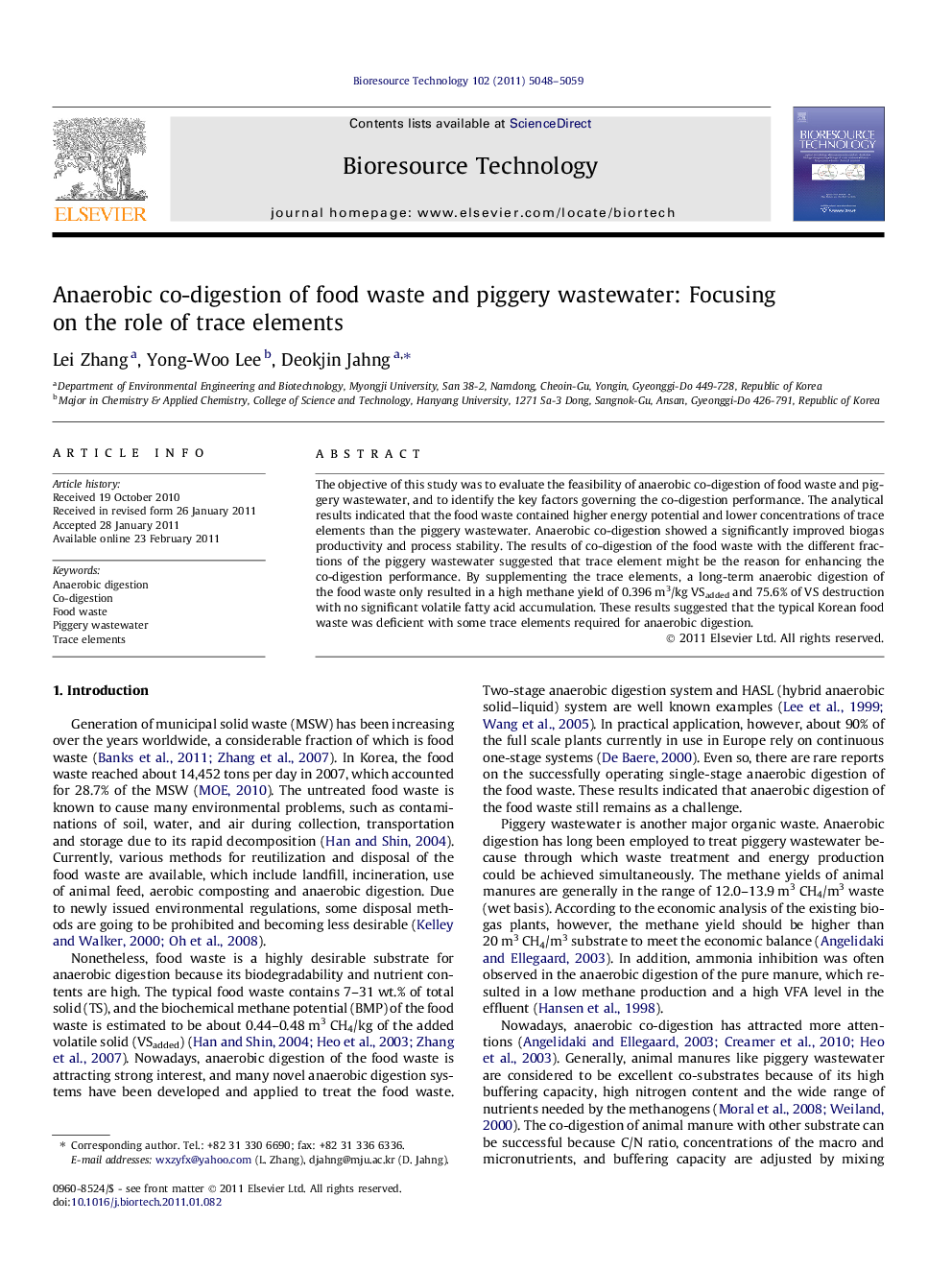| Article ID | Journal | Published Year | Pages | File Type |
|---|---|---|---|---|
| 10395108 | Bioresource Technology | 2011 | 12 Pages |
Abstract
The objective of this study was to evaluate the feasibility of anaerobic co-digestion of food waste and piggery wastewater, and to identify the key factors governing the co-digestion performance. The analytical results indicated that the food waste contained higher energy potential and lower concentrations of trace elements than the piggery wastewater. Anaerobic co-digestion showed a significantly improved biogas productivity and process stability. The results of co-digestion of the food waste with the different fractions of the piggery wastewater suggested that trace element might be the reason for enhancing the co-digestion performance. By supplementing the trace elements, a long-term anaerobic digestion of the food waste only resulted in a high methane yield of 0.396Â m3/kg VSadded and 75.6% of VS destruction with no significant volatile fatty acid accumulation. These results suggested that the typical Korean food waste was deficient with some trace elements required for anaerobic digestion.
Related Topics
Physical Sciences and Engineering
Chemical Engineering
Process Chemistry and Technology
Authors
Lei Zhang, Yong-Woo Lee, Deokjin Jahng,
